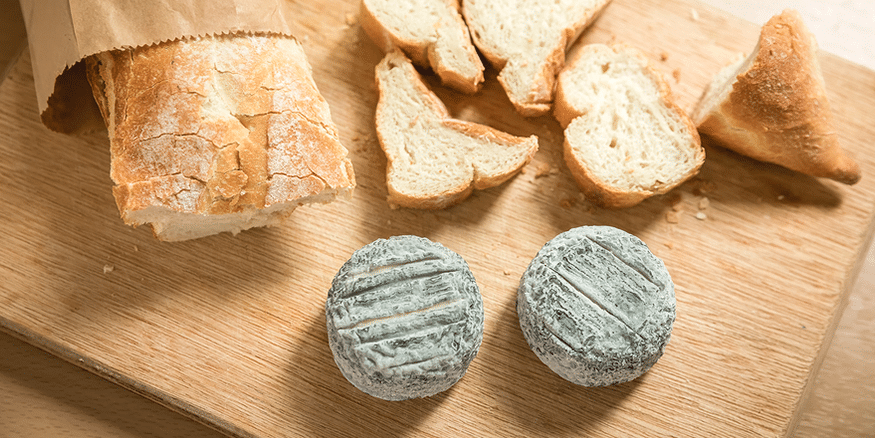
Yeast and Mould Allergy
Yeasts and moulds are minuscule single celled fungi. They belong to the same biological group as mushrooms, but are smaller. Mould colonies are often seen growing on the surface of moist foods such as bread, jam, and cheese.
Yeasts (Saccharomyces species) are used in food production to ferment the nutrient source on which they grow. This property is used in the leavening of bread (by baker’s yeast) and the manufacture of beer, wine and vinegar (by brewer’s yeast). When vinegar is distilled, yeast proteins are eliminated; therefore, distilled vinegar is tolerated. Yeast is a source of B vitamins, and is present in many multivitamin preparations containing B vitamins.
Allergy to Yeast & Mould
The spores of some mould fungi such as Aspergillus and Cladosporium herbarum (Hormodendrum) are common causes of inhalant allergy, especially for persons with asthma. People sensitive to inhaled fungal spores must avoid all sources of the fungi, such as the moist soil of houseplants, and damp rooms, especially basements, where moulds grow. Because mould spores are released from damp ground softened by the first thaw of spring, mould allergic persons with asthma may need to limit their time outdoors to avoid inhaling the spores in the air at this time of year.
A small percentage of asthmatic persons sensitive to inhaled fungal spores, and some non-asthmatic persons, develop urticaria (hives) when they eat or drink substances containing yeast or moulds.1,2 Extremely allergic persons can suffer an anaphylactic reaction, with breathing difficulty, hives, angiodema (tissue swelling), especially in the throat, and cardiac symptoms.3 These people must be particularly careful to avoid all sources of fungi in their diet.
Managing Yeast & Mould Allergy
Management of yeast and/or mould allergy requires the elimination of all foods that might contain yeast or mould. Foods excluded as obvious possibilities are leavened baked products, most cheeses, certain fruits and vegetables, certain beverages, and mouldy foods. Some lists of foods to avoid for yeast allergy cite milk because it could be a source of penicillin, an antibiotic derived from fungi belonging to the genus Penicillium. In the past, dairy cows were treated with penicillin to protect them from infection. However, this practice has been discontinued because of the danger to penicillin allergic people, so milk need not be avoided.
Some diets free of yeast and mould advocate avoiding wheat flour. Modern flour milling does not permit the use of mouldy wheat; therefore, flour need not be avoided. Nevertheless, all baked goods containing flour leavened with yeast must be avoided. Also, because enriched flours contain vitamins that may be derived from yeast, these products must also be avoided.
Malt is made by fermenting barley or other grains with yeast, and is used to flavour foods such as cereals, candies, and beverages. All sources of malt should be avoided.
All obvious sources of mould, such as mouldy jams and jellies, must be avoided. Leftover foods and leftover tea and coffee are potential media for the growth of moulds. Only fresh foods and freshly brewed tea and coffee should be consumed. Dried fruit may also be a source of mould.
Extent of Elimination of Yeast & Mould Required
The length to which a person must go to avoid all forms of yeast and moulds in the diet depends on their level of sensitivity.
After following a yeast and mould free diet for a period of about four weeks, an incremental dose challenge should be carried out to determine whether some yeast derivative could be taken with impunity.
An example would be malt as a flavouring. It is possible that moderately allergic people will exhibit no adverse effects. Malt is a commonly used flavouring in many baked goods, breakfast cereals, and commercially prepared foods, and including malt as an ingredient would allow beneficial liberalization of the diet.
Candida Albicans
Candida albicans is a dimorphic fungus, which means that it grows as a yeast form in a carbohydrate medium and forms hyphae (strands) when the medium is low in nutrients. Thus, it is commonly referred to as a “pseudo-yeast.”
The role of Candida as a cause of allergy has been much disputed.4 Positive skin reactions often occur in persons without clinical evidence of Candida infection or allergic disease. Candida species are extremely common members of the body’s resident microflora. Usually they are innocuous, as they are kept in check by other resident microorganisms such as bacteria. This balance can be upset, however, for example, when antibiotics eliminate several species of bacteria, or the immune system is not functioning efficiently. In these instances, Candida multiply unchecked and soon cause infections such as oral thrush, vaginal moniliasis and skin eruptions.5
Some practitioners believe that repeated imbalances of this sort can lead to a chronic Candida sensitivity, which in turn can lead to numerous food and chemical sensitivities.6 A “Candida diet” is prescribed to treat this condition, usually excluding foods that contain sugars and more complex carbohydrates. 7 In addition, the person is advised to avoid dietary forms of other fungi, which are believed to cross-react with Candida and produce similar reactions.
Although Candida infection or sensitivity may contribute to mould and yeast sensitivity, this connection is not scientifically proven.8 The instructions in this article are for a yeast and mould allergy (Type I hypersensitivity) and should not be used to treat a suspected Candida sensitivity.















